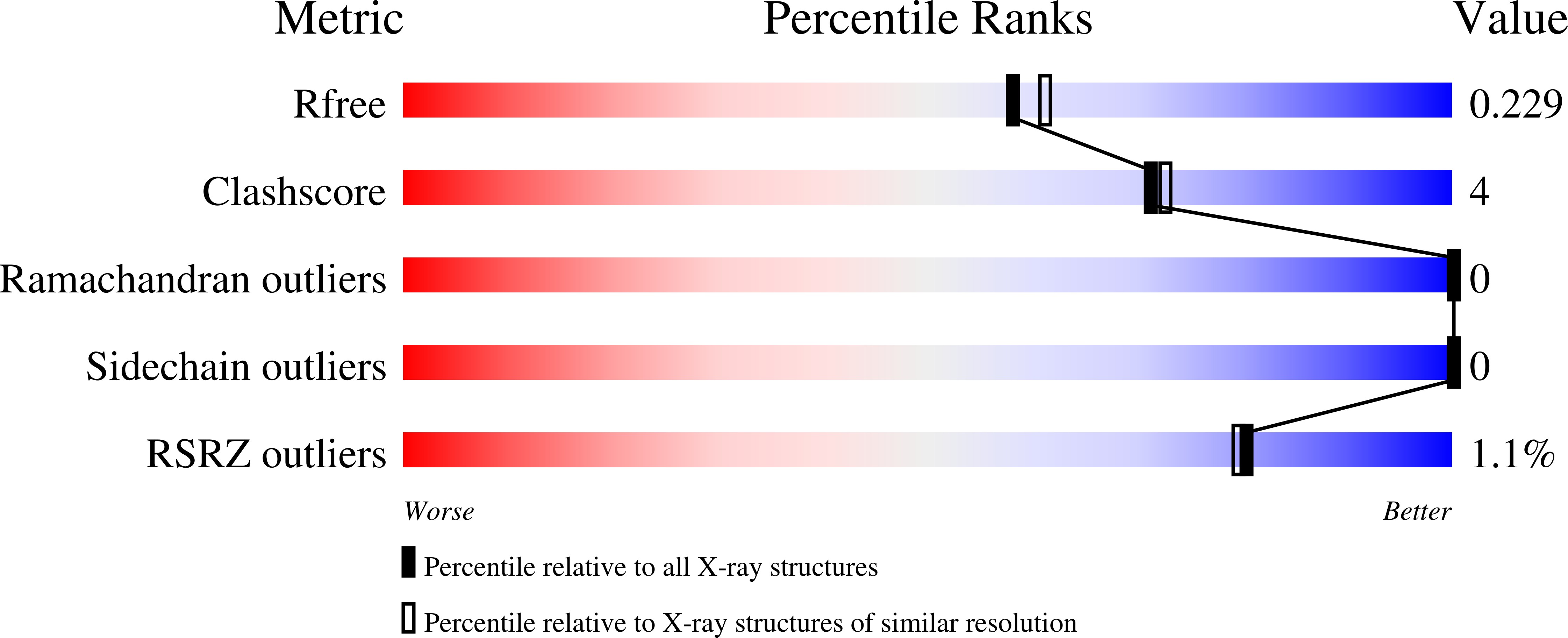Selecting the first chemical molecule inhibitor of HSP110 for colorectal cancer therapy.
Gozzi, G.J., Gonzalez, D., Boudesco, C., Dias, A.M.M., Gotthard, G., Uyanik, B., Dondaine, L., Marcion, G., Hermetet, F., Denis, C., Hardy, L., Suzanne, P., Douhard, R., Jego, G., Dubrez, L., Demidov, O.N., Neiers, F., Briand, L., Sopkova-de Oliveira Santos, J., Voisin-Chiret, A.S., Garrido, C.(2020) Cell Death Differ 27: 117-129
- PubMed: 31068676
- DOI: https://doi.org/10.1038/s41418-019-0343-4
- Primary Citation of Related Structures:
6GFA - PubMed Abstract:
Pro-survival stress-inducible chaperone HSP110 is the only HSP for which a mutation has been found in a cancer. Multicenter clinical studies demonstrated a direct association between HSP110 inactivating mutation presence and excellent prognosis in colorectal cancer patients. Here, we have combined crystallographic studies on human HSP110 and in silico modeling to identify HSP110 inhibitors that could be used in colorectal cancer therapy. Two molecules (foldamers 33 and 52), binding to the same cleft of HSP110 nucleotide-binding domain, were selected from a chemical library (by co-immunoprecipitation, AlphaScreening, Interference-Biolayer, Duo-link). These molecules block HSP110 chaperone anti-aggregation activity and HSP110 association to its client protein STAT3, thereby inhibiting STAT3 phosphorylation and colorectal cancer cell growth. These effects were strongly decreased in HSP110 knockdown cells. Foldamer's 33 ability to inhibit tumor growth was confirmed in two colorectal cancer animal models. Although tumor cell death (apoptosis) was noted after treatment of the animals with foldamer 33, no apparent toxicity was observed, notably in epithelial cells from intestinal crypts. Taken together, we identified the first HSP110 inhibitor, a possible drug-candidate for colorectal cancer patients whose unfavorable outcome is associated to HSP110.
Organizational Affiliation:
INSERM UMR1231, Laboratory of Excellence LipSTIC and label Ligue Nationale contre le Cancer, Dijon, France.
















